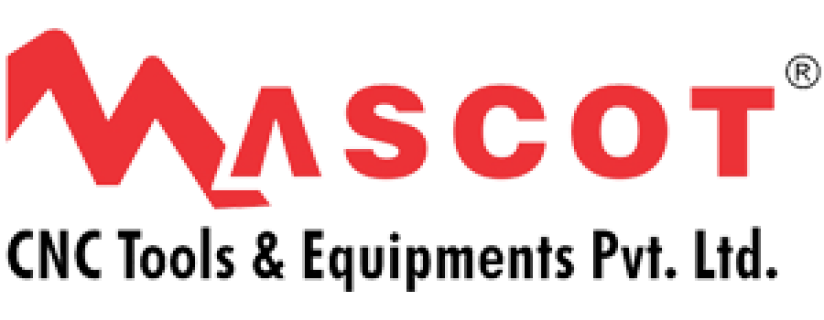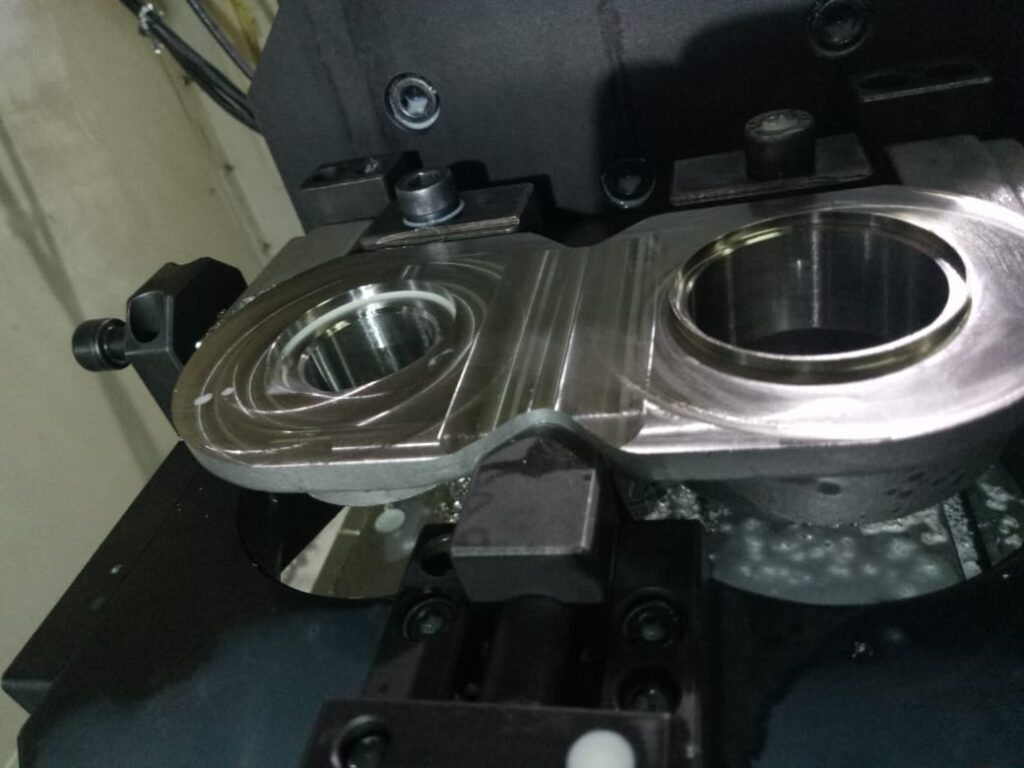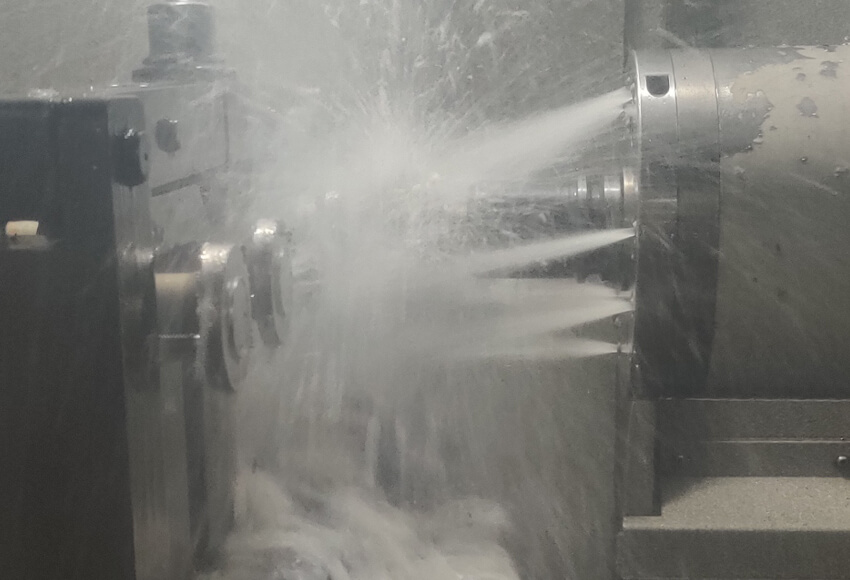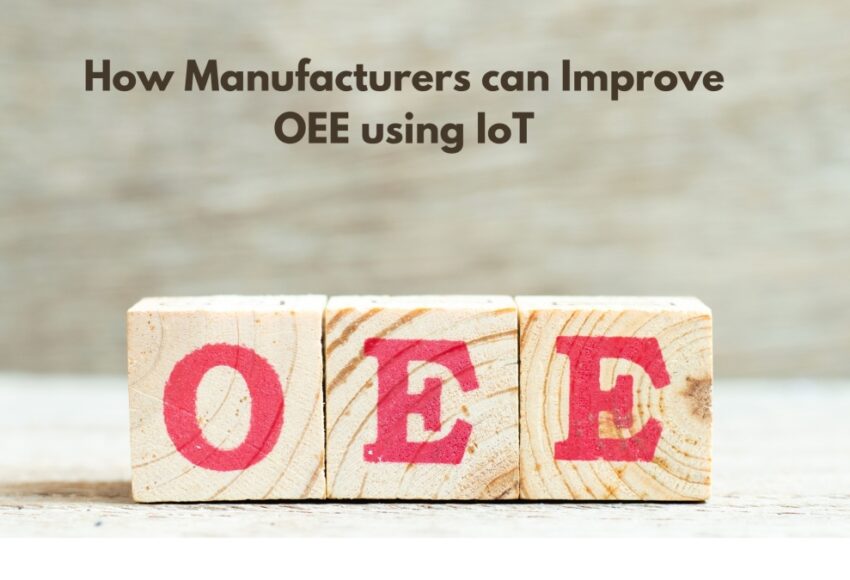Digitizing your factory is taking your first step towards Industry 4.0 using the Industrial Internet of Things (IIoT). IIoT is no longer just a catchword but is being used by factories and machine shops worldwide. More and more manufacturing companies are adopting Industrial IoT and getting a competitive advantage by driving great results.
In this article, we will discuss the challenges and benefits of Industrial IoT implementation.
What is the Industrial IoT?
Industrial IoT (IIoT) is a seamless interaction between people, machines, processes, and information technology. IIoT uses manufacturing data, analytics, and cloud computing to help companies improve their operations, increase productivity, and improve quality. Industries use the Internet of Things (IoT) for applications such as remote monitoring and predictive analytics of their factory. Industrial IoT allows them to monitor the factory remotely from anywhere.
IIoT is a vital part of the Industry 4.0 industrial revolution and plays a significant role in creating manufacturing excellence and helping in the digital transformation of factories. The primary issue manufacturers face today is the lack of transparency and visibility of factory performance due to the unavailability of IT (Information Technology) and OT (Operational Technology). IT is for gathering information or data, and OT manages the physical operations and machines that carry out the manufacturing processes.
Digital transformation is about adopting new technology for rapid growth and the rapidly evolving business models fuelled by this technology. Data-driven manufacturing provides manufacturers with a competitive edge to prosper in an exceedingly competitive landscape.
Challenges faced by manufacturers
Manufacturing companies that implement IIoT solutions for their factories are trying to manage their operations efficiently. One of the problematic tasks manufacturing companies face is making a radical shift in following management practices. Measuring your production and performance parameters is the first step towards efficiency, but it now needs to be backed by data for which IIoT is the key.
Here are some of the top challenges faced by manufacturers like you while implementing IIoT:
Finding the right IIoT integrator
Regardless of the expensive or the new technology you have, it can become obsolete if you don’t have the right team to onboard it for your company. Industrial companies can successfully adopt IIoT if they have the right provider and an integrator who knows IIoT technology. The integrator should understand the integration requirements and have hands-on experience in the manufacturing sector.
It is recommended to appoint an external integrator right from your IIoT integration to the implementation phase. This process will ensure that you get the results and ROI you want.
Suitable Hardware and Data Connectivity
Old equipment and legacy machines, and newer machines can be easily integrated with new technology and are compatible with cloud-based systems like IIoT.
IIoT technology can extract data from machine sensors and controllers using cloud-based systems via the internet. This data helps manufacturing companies understand their productivity, machine downtime and improve efficiency.
Companies need to examine their existing hardware infrastructure and assess future needs when researching for IIoT solutions for their factory. Based on their goals, they can choose an IIoT solution compatible with their existing machines and keep an eye on their future needs to see that these solutions are scalable to your business needs.
Data Security
Data security is another challenge in adopting IIoT for your factory. A data breach can stop your work till you can restore backup systems. As cloud storage is becoming a norm, companies should work with an IIoT integrator who understands these challenges and secure their data by establishing protocols and safety measures to reduce the risk of security vulnerability.
Data processing Capacity
Companies need to analyze their data processing needs before they develop the IoT architecture for their factory. An experienced integrator will help companies assess their current data processing ability and how they can scale it up in the future.
Data Migration/Integration
Companies also need to check whether the server’s data can be easily migrated to their ERP systems.
Benefits of IIoT
Increased Machine Utilization
Machines connected through Industrial IoT give manufacturers real-time insight into the key performance indicators and machine health. The KPIs can include Overall Equipment Effectiveness and Overall Process Effectiveness, enabling manufacturers to manage unplanned downtime. Based on the data, companies can schedule preventive maintenance, thereby increasing machine utilization.
Predictive Maintenance
Machine downtime has a significant impact on productivity for a manufacturing company. When companies approach machine downtime in a reactive rather than a proactive manner, they spend a considerable amount of time trying to find out the issue, resolve it, what parts they need, and how much it will cost.
IIoT allows continuous monitoring of machines and helps manufacturing companies use predictive maintenance to reduce machine downtime.
Reduce human error
A company using IIoT can digitize its entire supply chain and track inventory in any of its locations. By using Industrial IoT, companies can minimize manual labor and mitigate the risk of human error.
Increased safety at the workplace
Companies that are adopting IIoT solutions in their factory are helping make their factory a safer place to work. Interconnected IIoT devices that monitor safe machine operating parameters such as pressure, vibration, gas leaks and the heat produced during manufacturing processes can help avoid accidents by alerting the factory floor workers.
Increased operational efficiency
Machines connected to software through adding sensors send a steady stream of data about their performance. This connectivity helps manufacturers get a more in-depth insight into the working of each machine.
IIoT enables manufacturers to make decisions that are data-driven and reduce bottlenecks in the production process. Companies can increase operational efficiency when they can amend processes in real-time, helping them reduce operating costs.
Factors that influence successful IIoT implementation
Independent data audit team
The first step to a successful implementation of Industrial IoT in your factory is to set up a digitalization department or a data audit department. The department will be responsible for conducting regular data audits for the successful implementation of IoT.
Open communication between team members
The success of any IIoT implementation is open communication between team members of different departments. Efficient collaboration between production, maintenance, supply chain, and other verticals will bolster the implementation process and impact the IIoT implementation’s effectiveness.
Reliable and experienced IIoT integrator
It is vital to choose the right technology provider and integration partner to implement IIoT infrastructure in your factory. An automation partner who has the skill and knowledge of working with manufacturing companies will be the right choice for your industrial company. The right integrator will help you leverage the gathered operational data to add value to your business outcomes.
IIoT infrastructure
A reliable WIFI network or LAN network (Good internet connectivity on shop-floor) and a dedicated screen if there is a need to monitor the data continuously.
Setting Key Performance Indicators
Selection and tracking of Important Key Performance Indicators, which affects the whole manufacturing process and performance. KPI’s are measurable values that indicate the
According to the application, KPI varies as per the selected machine like CNC, Press, Furnace, Energy meters, etc.

To conclude, manufacturing companies all across the world are extensively using IIoT in their factories. IIoT helps them to maintain machine uptime, reduce waste, increase revenue, and decrease costs. With the help of IIoT, manufacturing companies can do demand forecasting, enhance product quality and get products to market faster.













